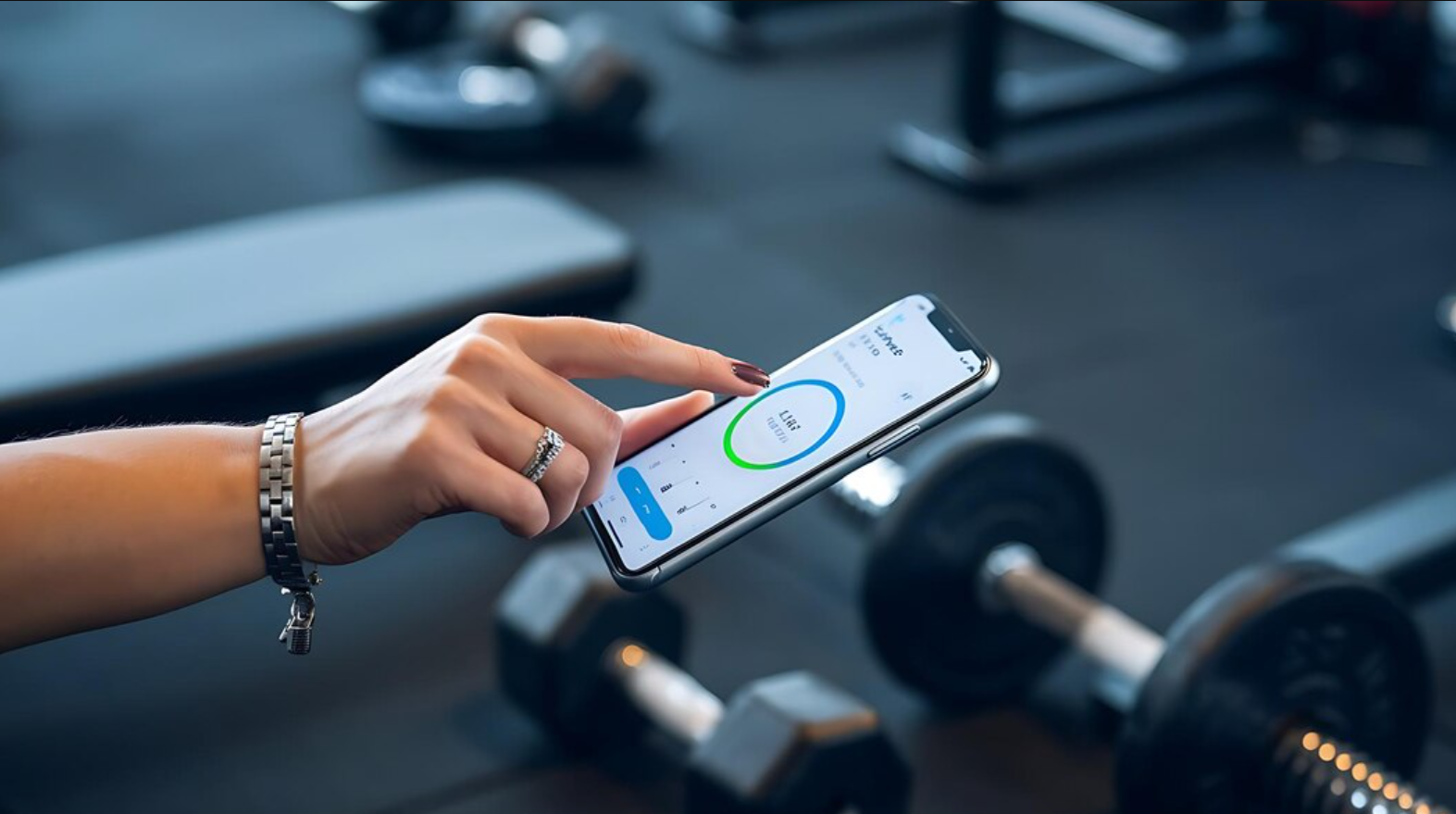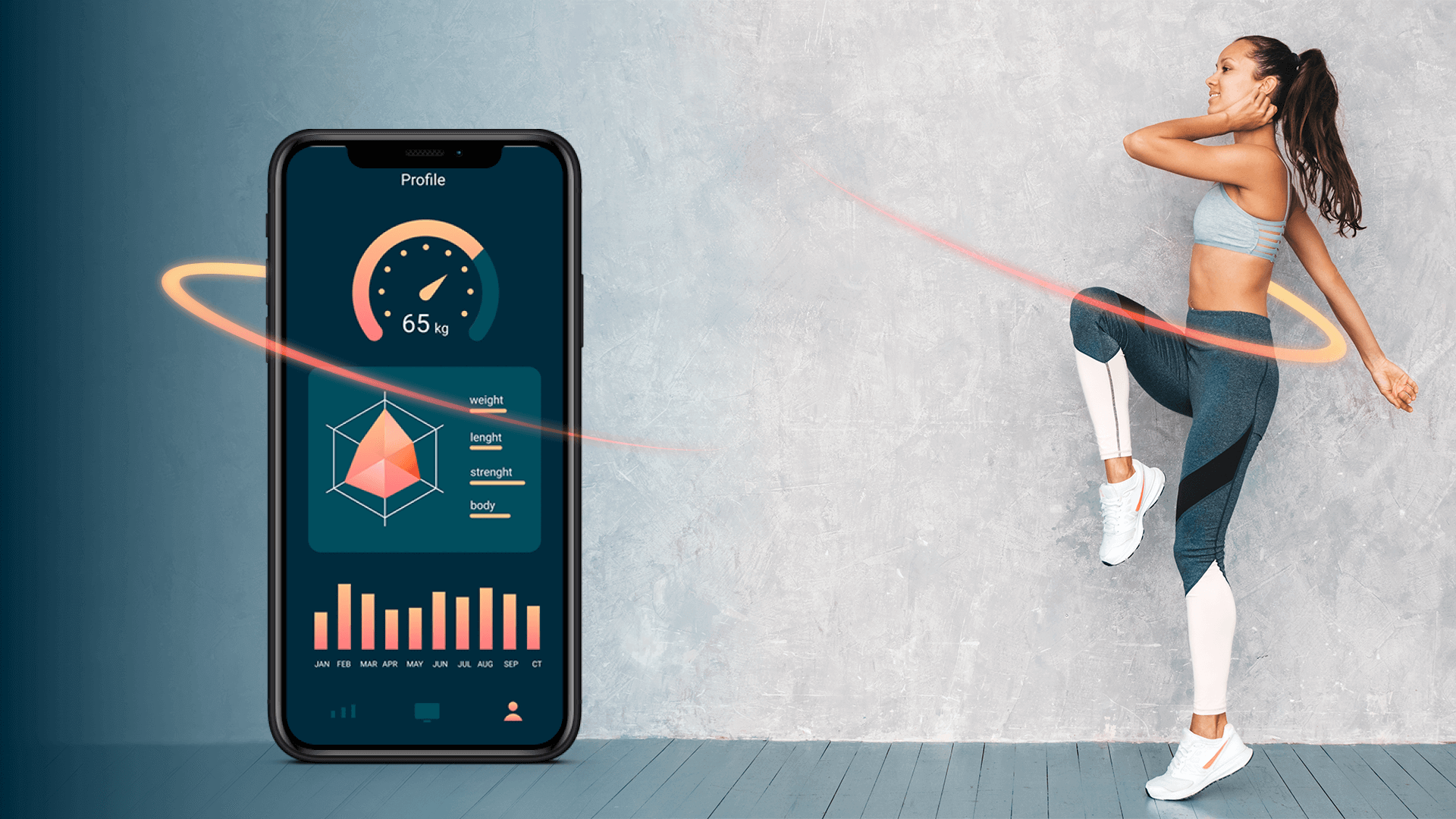Mobile health (mHealth) apps are growing in popularity and are revolutionizing how we think about fitness and health management. The market for mHealth apps worldwide is estimated to be $43.5 billion in 2022, proving this trend is growing. It's predicted to grow by a compound annual growth rate (CAGR) of 11.6% from 2023 until 2030, signaling a boom in the sector.
In this blog, we'll examine the most important aspects and factors that impact the price of fitness app development and the details of the cost.
What is a Fitness App?
The mobile application lets users monitor their fitness levels, such as exercise, diet, and general health.
It is compatible with tablets, smartphones, and wearable devices, including smartwatches and fitness trackers, to set fitness goals, monitor progress toward achieving those goals, and offer motivation and support.
Fitness apps can be utilized by people of all fitness levels, from novices to more experienced athletes. They can aid users in losing weight, gaining muscle mass, improving cardiovascular health, or just staying active.
Cost of Developing a Fitness Application
When you think of creating a fitness app, one of the most frequently asked concerns is: What's the cost of Fitness App Development? Many factors affect the price of a fitness application, such as features, design, and platform. We're able to provide you with an approximate estimation based on industry norms.
If you're considering developing an app that tracks fitness by 2025, you can get an idea of the price by analyzing the amount of time needed to develop it and the rate per hour of app developers.
Development Platform
The cost of creating a fitness app is determined by the development method chosen. Costs vary depending on whether you select the cross-platform approach or iOS or Android development.
Cross-platform development allows multiple platforms to be supported by one codebase, possibly cutting down on long-term maintenance costs even though designing for only one platform, such as Android or iOS, might initially appear more economical.
Cost For Several Features
An app for fitness includes numerous aspects that improve its utility and appeal. Estimating a budget requires a thorough understanding of the financial and time effects of integrating these components. Let's examine some key aspects, along with the time frames and expenses involved in developing them.
Push Notifications
The business owner will always try to entice their customers by sending attractive messages and notifications to ensure they regularly visit the site. This increases the likelihood of purchasing and conversions. However, integrating software to allow notifications will cost extra money.
Average Cost: $1900 - $17000
GPS And API Integration
It doesn't matter if it's fitness or another kind of location-based tracking; it's now a standard feature of every app. You should include the GPS API to stand out and make an app useful to your clients.
Average Cost: $20000 to $30000
Gamification
What happens if a user receives an incentive when they achieve the goal? This is a great way to keep the user engaged with the user and increase the chances of conversion. So, it is essential to include gamification in your application.
Average Cost: $20000 to $75000
Login And Sign Up Form Integration
Your application must have a sign-up or login portal to gather user information. Forms can be hosted or OTP-based. Hosting-based or basic forms are less expensive than sign-ups based on OTP.
Average Cost: $8000 to $20000
Calorie Nutrition Feature
The Fitness App must require daily and frequent updates regarding the user's diet, burned calories, and nutritional information. This feature can be customized and requires a significant investment in making a reliable application.
Average Cost: $60000 to $100000
Workout Plans
Goal trackers and habits help users continuously enhance their fitness routines and create a positive perception of the app. So, it is important to incorporate workout plans into your app that automatically alter according to the program.
Average Cost: $25000 to $50000
UI and UX Development
The app must feature a striking design and appealing aesthetics to keep people interested. Businesses and entrepreneurs often question the amount of money needed to develop a fitness app with attractive design and features. Thus, it is possible to create an enjoyable user experience for an app for fitness by drawing inspiration from the app and using vibrant images and animations, as well as other features designed to look attractive.
The total cost of your app could be influenced by its design. The designer of your app could be slower if they need elaborate screens to provide the details of the designs. Also, the cost of creating a prototype differs from the cost of an image.
Inhouse Vs. Outsourcing Cost
It is possible that you don't have the knowledge required for iOS and Android if you want to develop native applications that work with both systems. Ultimately, you'll need to find new employees, which could cost more than anticipated. Consider hiring app developers to develop your fitness mobile app.
In contrast, you could reduce your expenses by outsourcing the task of developing fitness apps to a professional fitness app development company. Here are some expenses that you can cut by outsourcing your task.
Building Infrastructure: $300000 to $500000
Employers: Between $50000 and the amount of $250000 ( each month)
Possession or rental of Area: $25000 to $100000( per month)
Integration with Wearable Devices and Health Ecosystems
Integration with health ecosystems and wearable devices is essential to creating an application. This requires compatibility with various gadgets, from smartwatches to fitness bands, making development more complex. Making sure that data sync is seamless and that live-time health tracking is vital.
The technology used to connect and interpret data from various devices can significantly impact the budget. If you plan to develop an application, consider the lengthy testing needed to ensure flawless integrations across different platforms. Integration enhances the user experience and requires sophisticated technical expertise, adding to the development costs.
Location of the Development Team
The location of the developer's team is a major element that affects the price of creating an application. Developer costs vary widely based on the location of the developer due to differences in living expenses and market prices. For example, hiring a development staff member within North America or Western Europe generally has a higher price compared to areas like Eastern Europe or Asia.
This can significantly impact the application's total budget. Furthermore, the team's location could affect communication and collaboration, especially when working in multiple time zones. Thus, choosing the appropriate place for the team is vital to keeping budgetary constraints in line with the desired level of quality and expertise.
Understanding these aspects ensures a precise budget and successful app development. They offer a full view of the amount needed to make fitness apps a reality.
Design Complexity
The user interface's complexity and uniqueness directly influence the price you pay to create this fitness application.
If you want to make minor changes to an established template, your designer can complete the task within 40-50 hours. However, if you want to design something original, easy to use, user-friendly, and intuitive to help set your brand apart from the others, User interface design will comprise the largest portion of the process.
The complexity of your design increases when you add the following characteristics:
Complex animation
Interactivity
Support for a variety of devices like smartwatches, tablets, and so on. and resolutions for screens
Integration with a voice assistant
Incorporating Augmented Reality
You must have an attractive design and acceptable speed. If your animation is slow to load, people tend to hate it rather than enjoy it.
Technical Support and updates
The costs don't stop the moment you start the fitness application. Consider how you'll track your performance, make changes, and assist customers.
As the app's popularity increases, you'll need to ensure that its performance doesn't decrease. It may also be beneficial to incorporate new features to keep them enthralling your customers. However, these new features could cause bugs and expose security flaws, so you must constantly test your software.
If you have an internal team of developers, technical support won't be a problem. If you have employed an outside tech partner, the ideal scenario is that they should be able to take over updates and support. If this isn't feasible, you should request specific technical documentation to help the person taking on the task. It is recommended to allocate around 15 percent to 20 percent of your fitness app's development expenses to maintenance.
How Fitness Apps Make Money?
Making a fitness application can be rewarding, but it's equally crucial to find effective monetization strategies that will not only help pay the cost of creating the fitness app but also possibly generate revenues.
Selling Advertisements
Incorporating ads into your fitness app is a popular method of earning income. You can collaborate with advertisers to show relevant advertisements to your customer base. But it's essential to strike a good balance between user experience and monetization.
Freemium Model
The freemium model provides an initial edition of the fitness app for free, while additional features and content are offered at a cost. This can help attract an even larger number of users and also offers users the possibility of upgrading depending on their requirements and preferences.
In-app Purchases
In-app purchases are an increasingly popular way to monetize fitness apps. This strategy lets users download your app for free, and afterward, you can offer premium features and content or virtual items within the application. Users can purchase one-time or choose micro transactions to improve their experience.
Subscription Model
Subscription models are one of the most popular ways to monetize your business. These models provide premium services and content to customers regularly, often every month or annually. In the case of fitness applications, this may be as simple as offering access to the latest training plans, individual coaching, or more advanced analytics and tracking tools.
Subscriptions generate a steady income stream, which allows you to offer benefits to your customers and cover development and maintenance expenses.
The Key Takeaway
Knowing the costs involved in fitness app consulting services is essential to ensuring a profitable venture. Keep in mind that app development is a continual cost. When you release your app, it is still necessary to correct bugs, integrate the latest features and updates, and offer customer support.
If you're planning to create an app for fitness, personal training, health, or any other health-related purpose, carefully planning your project and selecting the best development partner will reduce expenses and increase the chances of success.






